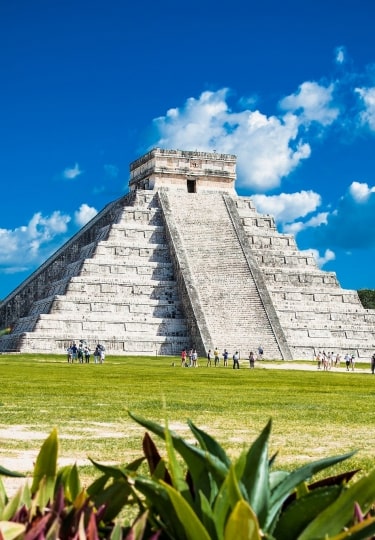Our individual reasons for traveling are many, but one common, list-topping motivation to get out there and explore is for the chance to encounter some of the world’s top cultural attractions. Indeed, outside the halls of museums and beyond the pages of any book, there are some incredibly iconic sites to help enrich your understanding of and give context to both ancient and modern cultures.
So get ready to tick off that cultural attractions bucket list with this quick spin around the globe.
Chichén Itzá, Yucatán, Mexico
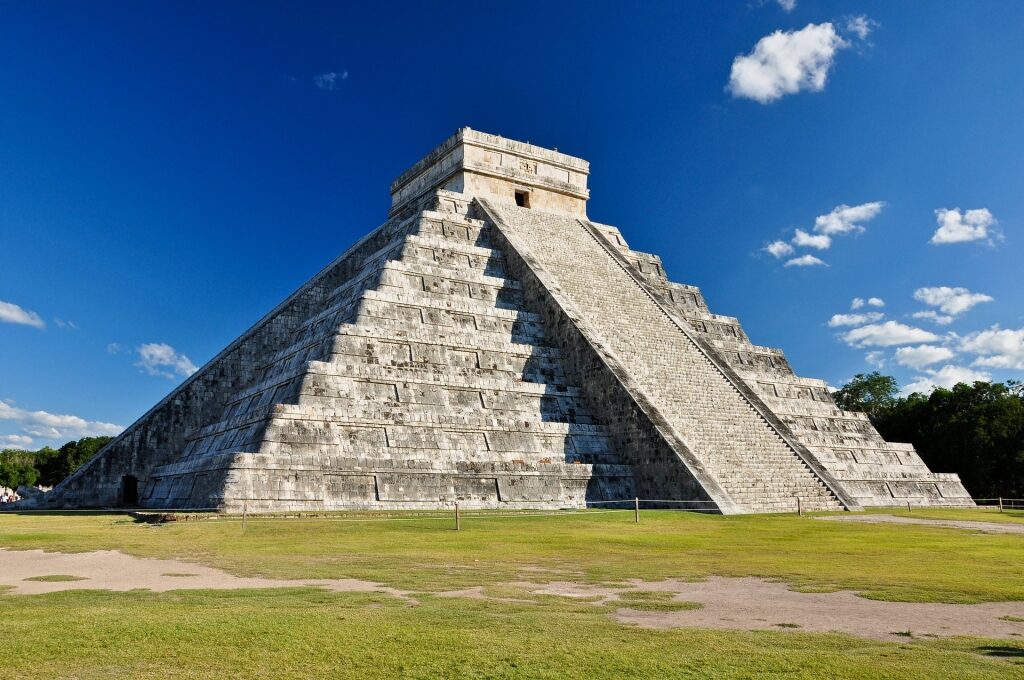
Chichén Itzá in Yucatán, Mexico
Pyramids were not an ancient building practice reserved solely for the Egyptians—indeed, throughout Latin America, step pyramids were a signature architectural feature for several distinct civilizations.
Among the most impressive of these remaining is found at Chichén Itzá. This fabled, four-square-mile archaeological site marks an ancient and once-thriving Mayan city conveniently set within day-tripping distance of Cozumel and other popular beach resorts along Mexico’s Riviera Maya.
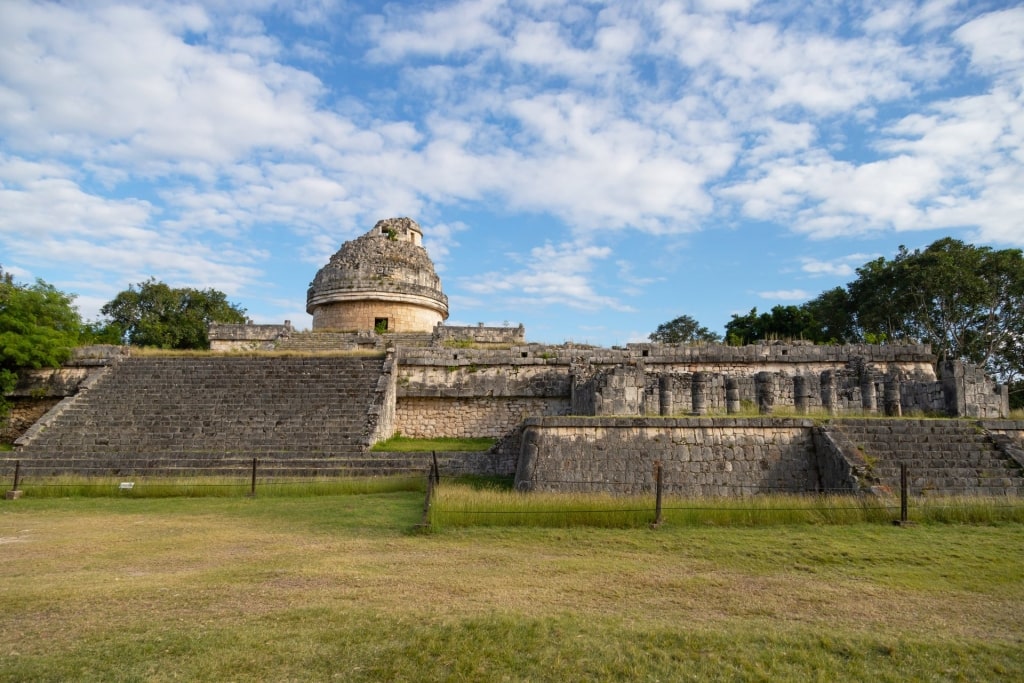
El Caracol in Yucatán, Mexico
The excavated site, which dates to the 6th century AD, is believed to have served religious, military, political, and industrial functions for as many as 35,000 denizens. Numerous structures remain, including a huge and well-preserved ball court, a smattering of temples dedicated to the likes of warriors and jaguars, and an impressive circular observatory tower known as El Caracol.
The complex’s celebrated centerpiece is El Castillo (The Castle), a step pyramid that soars some 80 feet above the main plaza. Each of its four sides faces a cardinal direction and claim 91 steps apiece; when combined with the top platform, the pyramid counts 365 steps in all (or, the number of days in the calendar year).
El Castillo was indeed built attuned to the cosmos—come here on the spring or autumnal equinox and, on a clear day, you’ll bear witness to an unusual optical illusion: the sun casting serpent-like shadows that appear to slither along the terraced stairways. Fitting, given that the pyramid is capped by carvings honoring the revered feathered serpent of the Maya, Quetzalcóatl.
La Sagrada Familia, Barcelona
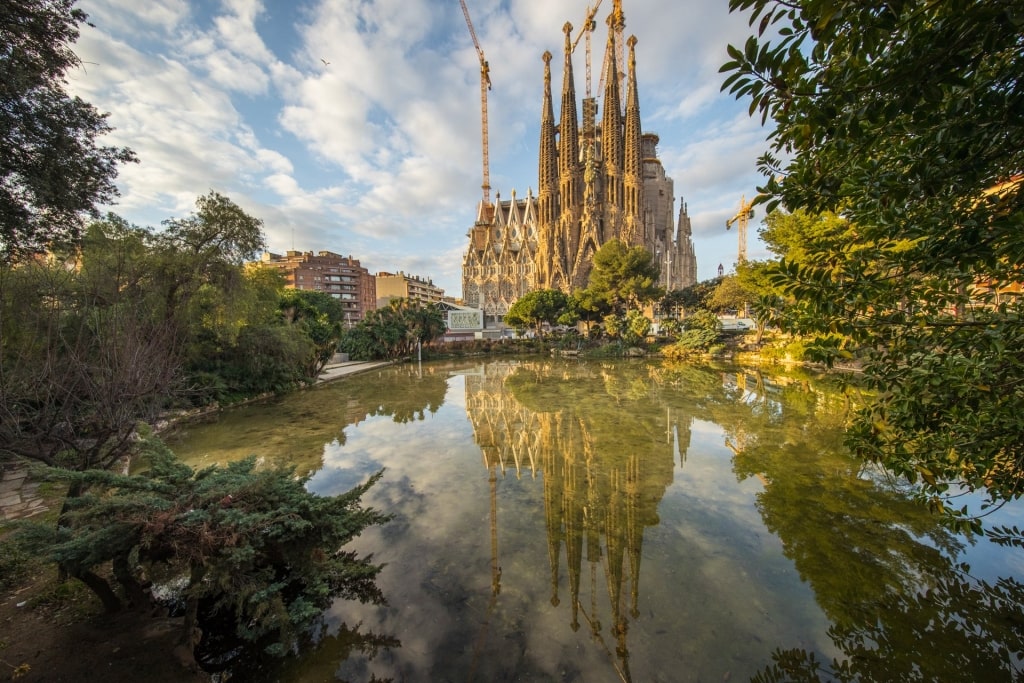
La Sagrada Familia in Barcelona, Spain
Few of the world’s top-ranking cultural attractions are as whimsical and wondrous as La Sagrada Familia in Barcelona, which stands in testament to the one-of-a-kind genius and vision of lauded Spanish architect Antoni Gaudí.
Gaudí, a devout Christian, made a life’s work of the realization of Spain’s signature basilica, though he never got to see it completed. The structure remains under construction today, some 140 years after it was started. At long last, its targeted completion date—2026, the hundredth anniversary of Gaudí’s death—is soon upon us.
Outside, the spires and towers of the basilica reach breathtaking heights of 566 feet and meld neo-Gothic and Art Nouveau elements to striking effect. Pick out details from the hodgepodge of fantastical carvings and statuary across the facade, spanning an assortment of flora and fauna, mythical creatures, and scenes from biblical stories.
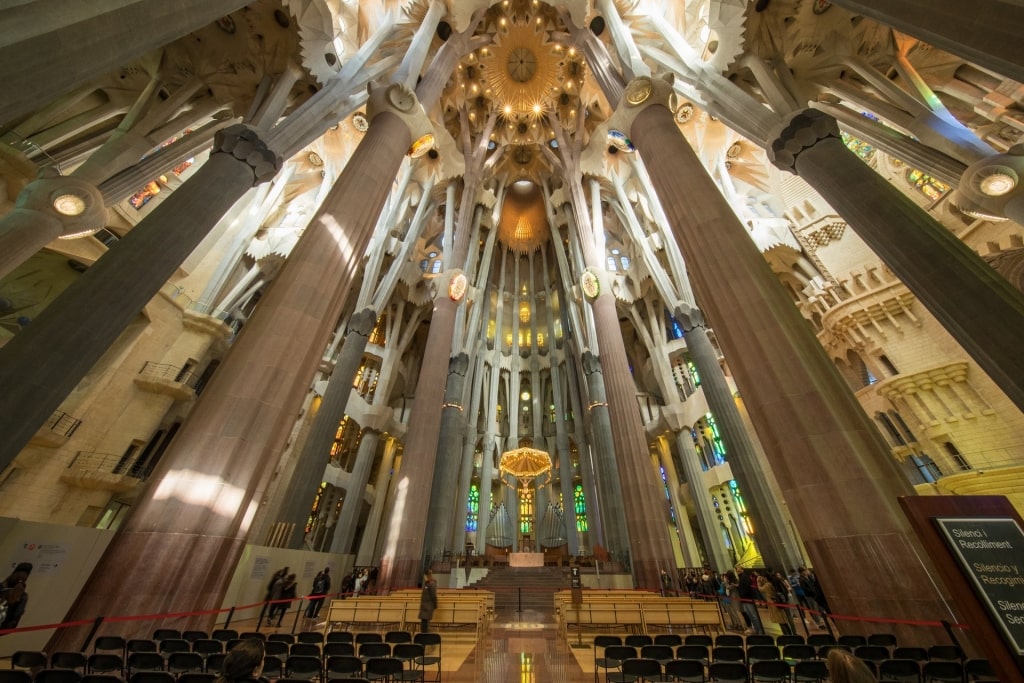
La Sagrada Familia in Barcelona, Spain
Step inside the cavernous interior—where the ceiling soars far out of reach and giant pillars are reminiscent of impossibly tall trees—and you’ll feel as if you’ve been transported into a forest cast in stone, bathed in the luminescence of stained-glass-filtered sunlight.
Take a seat and take it all in; there’s room for some 13,000 seated congregants to pause and ponder it all. Afterward, take the stairs or an elevator up to the cathedral’s bell towers for extra-special views of one of the most beautiful places in Spain.
Parthenon, Athens
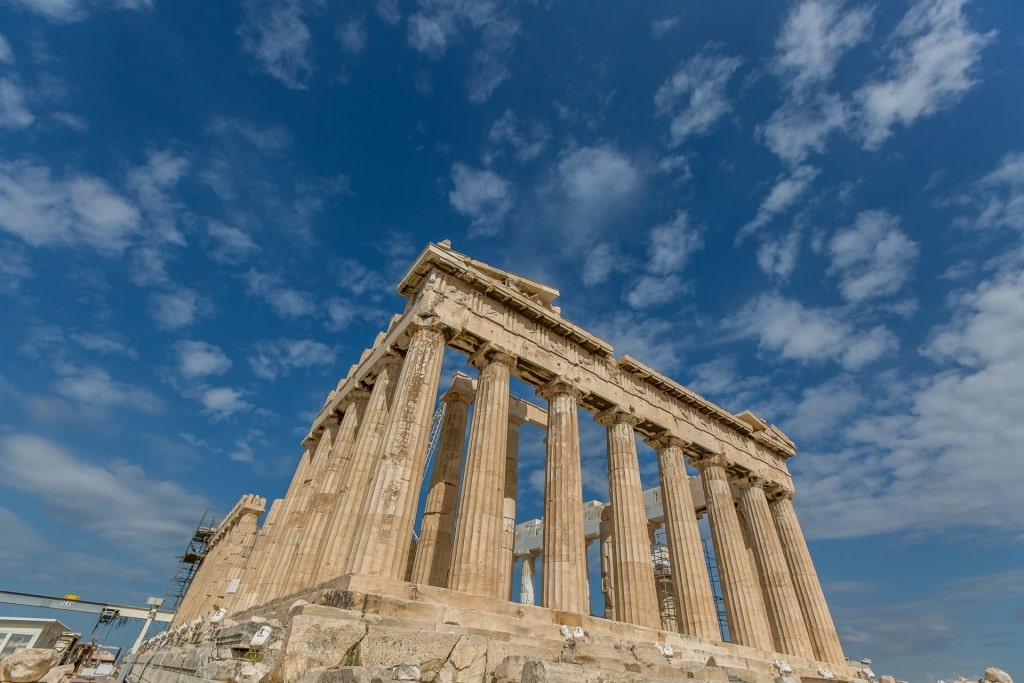
Parthenon in Athens, Greece
Cultural attractions just don’t come greater than the birthplace of Western civilization. Indeed, in Athens, atop the Acropolis—the rocky outcrop where the ancient city was born—the world stands much as it did in antiquity. A steep climb to the top affords encounters with relics of ancient Greece, the most famous of which is the Parthenon, the still-standing temple to Athena Parthenos, patron goddess of Athens.
Dominating the Acropolis, the perfectly proportioned shrine—a masterpiece of Doric architecture—dates back to the mid-5th century BC, when it was commissioned by Athenian statesman Pericles to serve as part temple, part treasury.
Visitors to this famous European landmark can stand in awe of the graceful, white marble building with its colonnade of stately columns while lapping up the spectacular views over Athens from its belvedere.
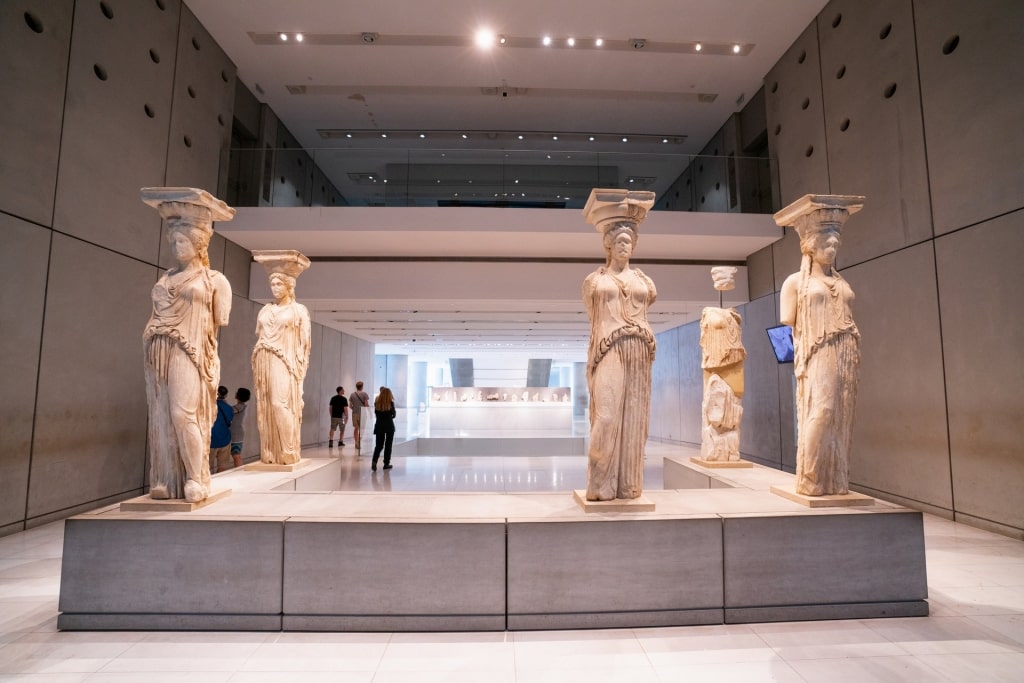
Acropolis Museum in Athens, Greece
Access to the interior chamber is restricted to visitors, but it’s worth imagining that the Parthenon once contained a massive gold-and-ivory statue depicting Athena. You can see some of the more impressive original statuary and friezes in the adjacent Acropolis Museum, one of the best museums in the world.
In the museum, you can also learn more about the controversial displacement of a large section of the Parthenon friezes, known as the Elgin Marbles, which are showcased in London’s British Museum today.
Statue of Liberty, NYC
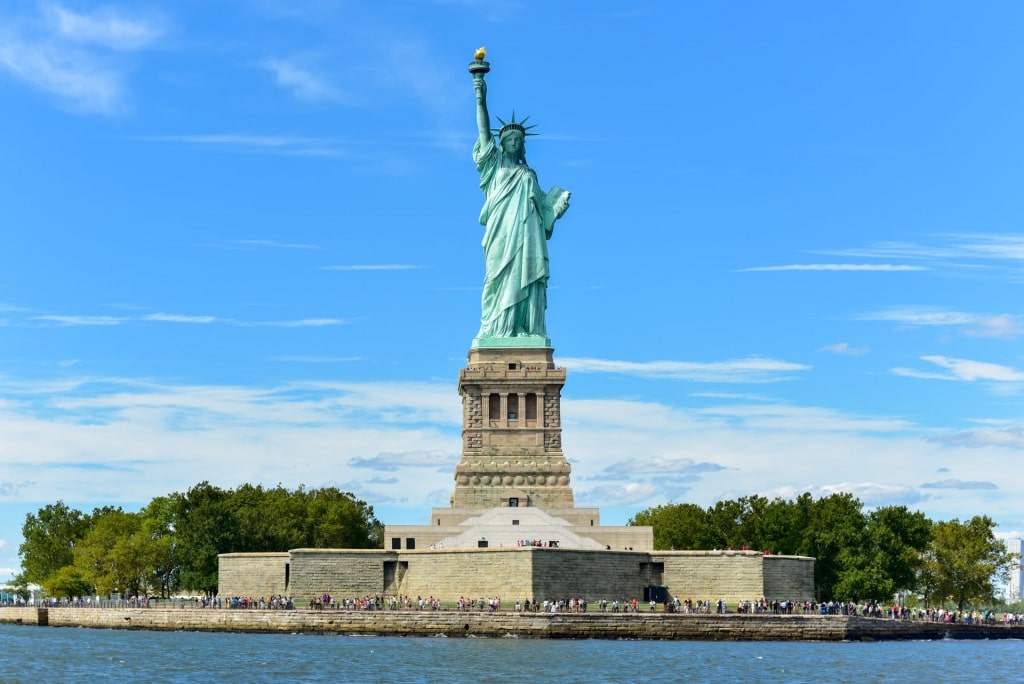
Statue of Liberty, NYC
This modern-day colossus, standing guard from her perch in New York Harbor, is one of the most evocative cultural attractions on our list. It’s hard not to break out in goosebumps upon first sight of Lady Liberty, sharing in the sensation of millions of immigrants to America who sailed into port from faraway lands to bear witness to her. Indeed, the Statue of Liberty has long represented a beacon and promise of American ideals.
Situated on Liberty Island, where it was officially dedicated in 1886, the copper statue stands 305 feet high, including its pedestal. Depicting a robed woman, Lady Liberty raises an illuminated torch in her right hand, and, in the left hand, holds a tablet inscribed with July 4, 1776—the date of America’s Declaration of Independence.
A gift from France to the U.S. in honor of America’s centennial of independence, as well as a symbol of the two countries’ friendship, the statue was a collaboration between French sculptor Frédéric-Auguste Bartholdi and French engineer Alexandre-Gustave Eiffel (of Eiffel Tower fame), who designed its iron frame.

Statue of Liberty, NYC
You can take in distant views of the statue from several spots on land, like the shores of Manhattan’s Battery Park, though the very best views are by sea.
Colosseum, Rome
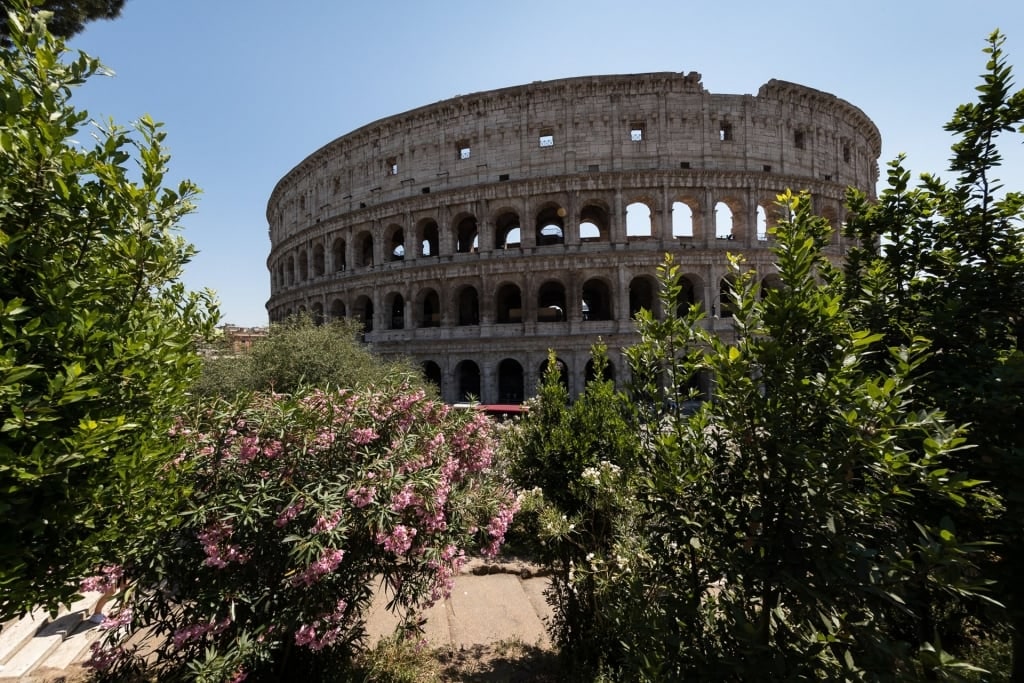
Colosseum in Rome, Italy
This ancient, nearly two-thousand-year-old Roman relic flings open a window onto antiquity. Squint, and you can almost envision the elaborate spectacles that once unfolded here for audiences of some 50,000, a brutal and bloody dance of gladiators and wild beasts at combat.
Tourists visiting Rome are wowed by the sheer scale of the massive, elliptical, travertine-clad structure. It’s relatively intact, too, considering it dates back to AD 72 when it was commissioned during the reign of Emperor Vespasian. The Colosseum has been subjected to centuries of natural catastrophes and plundering since.
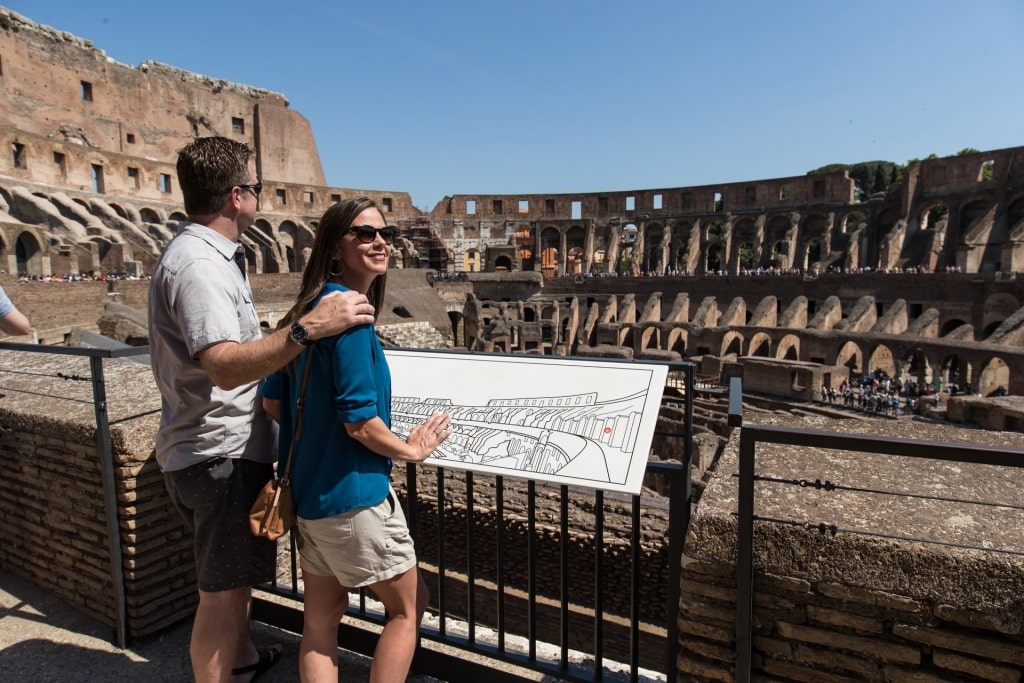
Colosseum in Rome, Italy
Take note of the differing column styles that prop up each of the Colosseum’s three arched tiers. Inside, sections were reserved by social status for everybody from the emperor and high-ranking senators down to the common plebs. Above, you can still see the supports that once held up the velarium—a massive, retractable canvas awning that served to protect the arena from the elements.
Read: Three Days in Rome
Stonehenge, Salisbury, UK
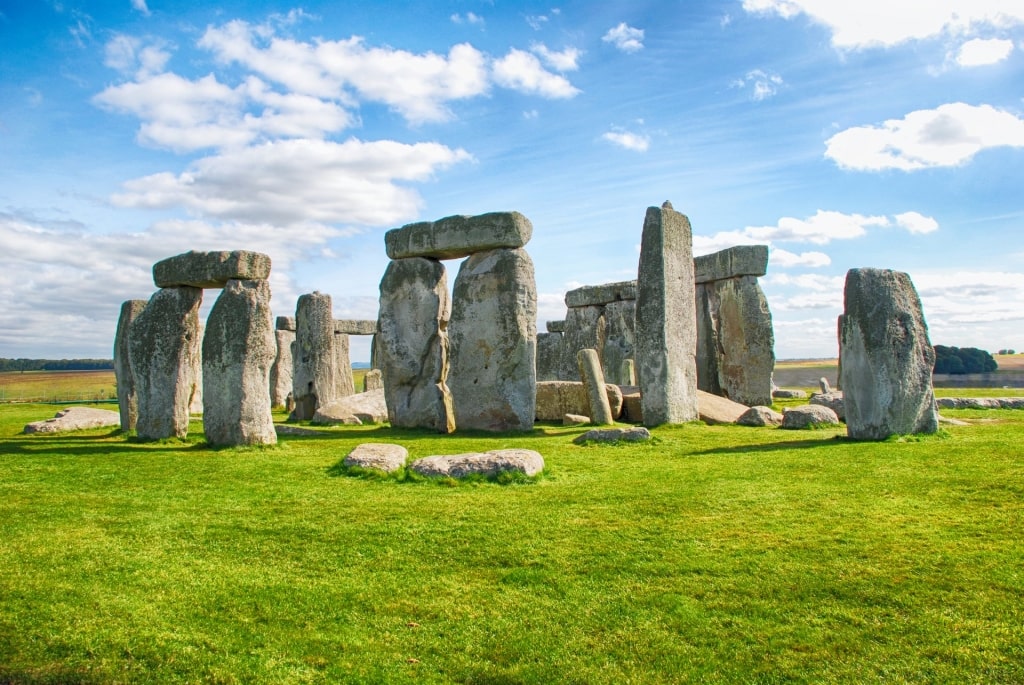
Stonehenge in Salisbury, UK
In the unassuming fields of southwest England—about 90 miles from London—modern visitors can reconnect with prehistoric cultures at Stonehenge. This circular stone monument, dating as far back as 3000 BC, is known for its mysterious and megalithic pillars arranged on Salisbury Plain.
Though extensive excavations and studies have been done, the jury’s still out on the significance of the archaeological site, only adding to its intrigue. Popular theories include that it served as a religious site, a monument to the dead, an astronomical observatory, or a place of healing.
What’s certain is that the site had been used as a burial ground and that the stone pillars are aligned in a way that is significant to the tracking of the sun, as evidenced by the megaliths’ distinct framing of sunrise and sunset here on the solstices.
Adding to the enigma is the remote origin of some of the bluestones used for Stonehenge’s construction, some of which weigh as much as 45 tons and were somehow hauled from more than a hundred miles away from neighboring Wales. See what conclusions you can conjure up while tuning into the lost cultures of yesteryear here.
Sydney Opera House, Sydney
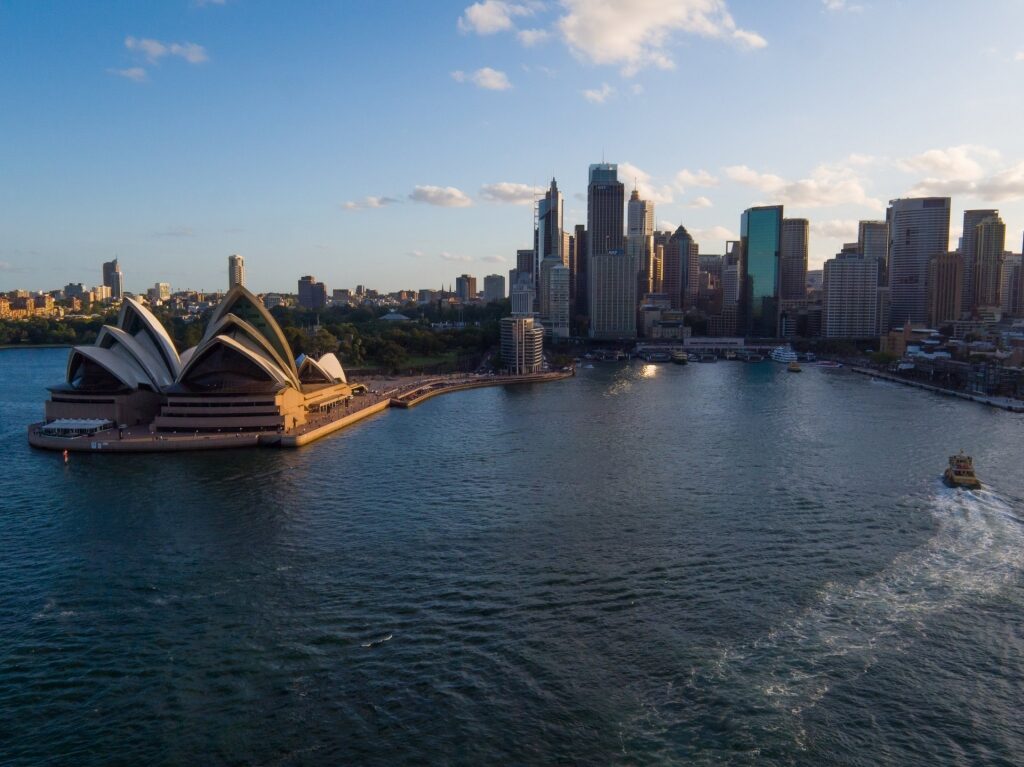
Sydney Opera House in Sydney, Australia
A symbol of Sydney and an icon for the whole of Australia, the Sydney Opera House is a cultural attraction par excellence. Hugging Sydney Harbour, the landmark building’s striking exterior—defined by its evocative series of white sail-shaped shells—sets it apart from the pack.
Numerous world-class acts are put on here, which span the performing arts. This Sydney landmark is home to flagship companies including the Australian Chamber Orchestra, indigenous Bangarra Dance Theatre, Bell Shakespeare, Sydney Symphony Orchestra, Opera Australia, Sydney Theatre Company, The Australian Ballet, and Sydney Philharmonia Choirs.
The curvy, photogenic opera house lends to Sydney having one of the best skylines in the world. It’s the handiwork of Danish architect Jørn Utzon, who won the bid in a contest for its design. The landmark was finally completed in 1973 after many years of budgetary and construction holdups. Guided tours of the interior are available, though you should purchase a ticket for a show if you can.
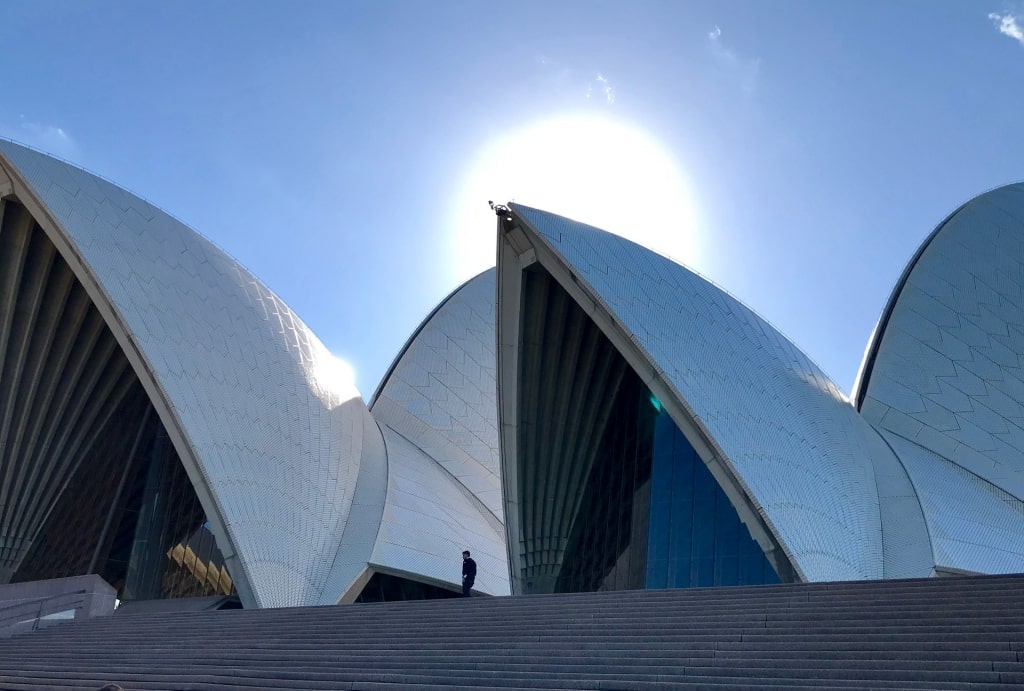
Sydney Opera House in Sydney, Australia
The 2,690-seat Concert Hall is devoted primarily to symphony, choral, and other musical concerts. The smaller Joan Sutherland Theatre is reserved for opera, dance, and other smaller-scale events, with seating for just over 1,500.
Four more intimate venues are used to put on stage plays, musical performances, and more. Or, you can catch a show outside at the stage reserved on the Forecourt for outdoor performances, where the likes of Florence and the Machine, Björk, Sting, and others have played.
Christ the Redeemer, Rio de Janeiro

Christ the Redeemer in Rio de Janeiro, Brazil
Hands outstretched, staring out onto the city and its bay ahead, Rio de Janeiro’s Christ the Redeemer statue is one cultural attraction that’s recognizable the world over.
From points throughout the city, the colossal statue of Jesus Christ serves as a beacon from its perch atop Mount Corcovado (elevation 2,300 feet). Get a closer look by ascending the summit of Mount Corcovado, which is best accessed via a scenic cog railway ride.
Once there, you’ll get a better grasp of the scale of the statue—the world’s largest Art Deco sculpture, it weighs 700 tons and stands nearly 100 feet tall, with outstretched arms that alone span 92 feet. The pedestal on which Christ the Redeemer stands positions it another 26 feet further above the mountain’s summit.
The vistas out onto the entirety of Guanabara Bay and Rio—home to one of the best skylines in the world—are worth the trip alone. Be sure to time your ascent for when skies are clear for optimal viewing.
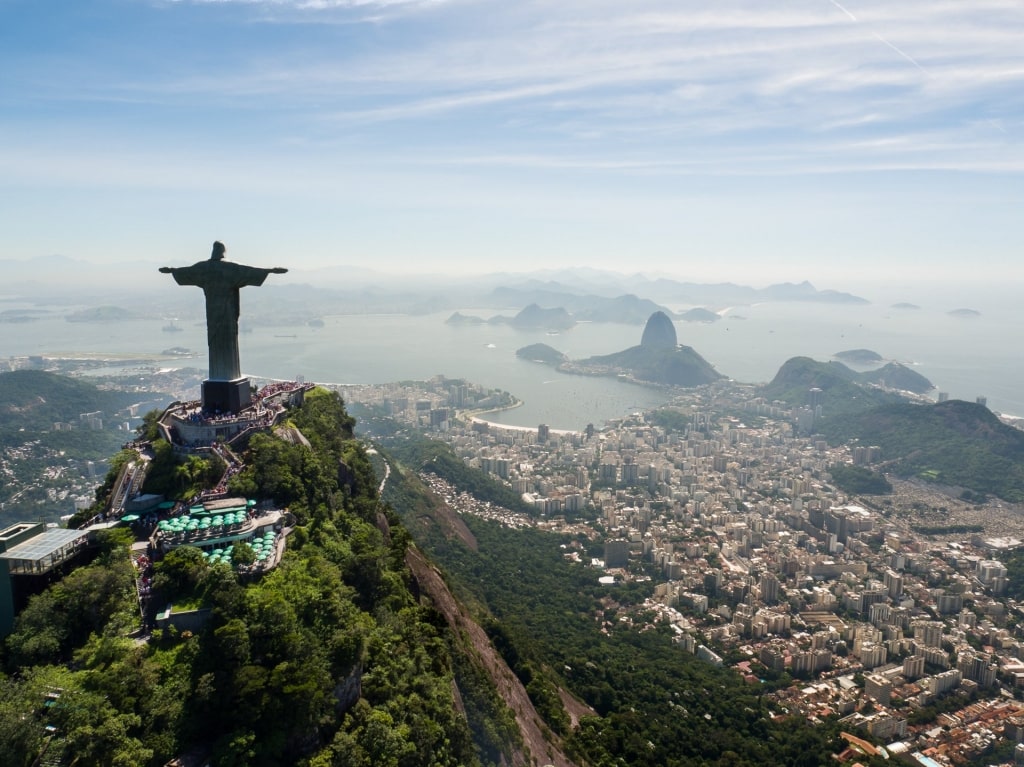
Christ the Redeemer in Rio de Janeiro, Brazil
If your wanderlust’s been sparked, now’s the perfect time to plan a trip to one of these spectacular cultural attractions. Best of all, each of these sites can be visited by cruise ship. Browse cruise itineraries on our website to find the perfect sailing to your dream location.
